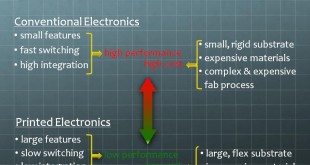Metal–organic frameworks (MOFs) are periodic crystalline one-, two-, or three-dimensional structures composed of two major components: a metal ion or cluster of metal ions and an organic molecule called a linker. For this reason, the materials are often referred to as hybrid organic–inorganic materials. They are a subclass of coordination …
Read More »New Manufacturing technologies paving the way for Silicon or Solid-state quantum computing
Quantum bits, or qubits, are the basic building blocks of quantum computers, just as bits are that of modern computers. Researchers around the world have been exploring a range of different physical systems to act as qubits, including trapping and isolating ions by using electromagnetic fields, photons trapped in microwave …
Read More »Quantum Thermometer can measure temperatures inside a quantum computer to living cell
The world, say many experts, is on the verge of a second quantum revolution. The most talked-about of such technologies is the quantum computer, a device in theory so powerful that it could crack the codes underlying internet security in just a few minutes. But full-scale quantum computers are still …
Read More »Graphene Bolometers emerging as high speed and sensitive Quantum photon detectors for quantum computation and quantum communication
Measurement connects the world of quantum phenomena to the world of classical events. It has both a passive role—in observing quantum systems—and an active one, in preparing quantum states and controlling them. In quantum physics, a measurement is the testing or manipulation of a physical system in order to yield …
Read More »DARPA’s NLM developing systematic approaches of designing metamaterials for imaging, AR Glasses and EMDrive.
The ability to design and fabricate materials with new functionalities opens the door to a new world of possibilities. They can be tailored to either augment the functionality of existing devices or create new devices with superior performances. EnMats are broadly defined to include, but are not limited to, metamaterials (both …
Read More »Nanolasers emerging technology for optical interconnects, near-field spectroscopy and sensing, optical probing for biological systems, microprocessors and quantum circuits
Lasers are widely used in household appliances, medicine, industry, telecommunications and more. A nanolaser is a laser that has nanoscale dimensions. These tiny lasers can be modulated quickly and, combined with their small footprint, this makes them ideal candidates for on-chip optical computing. Several years ago, scientists introduced nanolasers …
Read More »Cellulose nanopaper promising for green electronics, green vehicles, energy harvesting and optical sensing
In recent years, nanomaterials have displayed potential in effective detection and removal of greenhouse gases, chemical contaminants, organic pollutants, and biological agents. These materials come in various morphologies and have various functions (e.g., adsorbents, catalysts, or membranes). The high reactivity and high surface area of nanomaterials are some of the …
Read More »Graphene enables room temperature single photon emitter and detector for unhackable Quantum Key Cryptography (QKD)
Quantum Key Distribution, or QKD, enables two remote parties, “Alice” and “Bob”, who are connected by a passive optical link to securely generate secret key material. Single-photon sources (SPSs) and single-photon detectors (SPDs) are key devices for enabling practical quantum key distributions (QKDs). Single photon generation is necessary for secure quantum transmission; …
Read More »DARPA DeMi developing technologies for space based telescope on it’s military CubeSat satellite for Space Surveillance Awareness
The volume of space between the Earth’s surface out to geosynchronous orbit is enormous—equivalent to 240,000 times all the Earth’s oceans. Yet the number of objects calling that volume home is growing all the time—not just with satellites but with debris of all kinds, natural and manmade. And keeping track …
Read More »Printed electronics breakthroughs leading to Printed and flexible electronics (PFE) revolution
While the conventional electronics like computers and smartphones is built around silicon integrating billions of transistors and is manufactured using complex, costly and wasteful processes in multi-billion dollar foundries , The printed and flexible electronics aim to replace this by “organic” semiconductors which are long chains of thousands of repeating …
Read More » International Defense Security & Technology Your trusted Source for News, Research and Analysis
International Defense Security & Technology Your trusted Source for News, Research and Analysis










